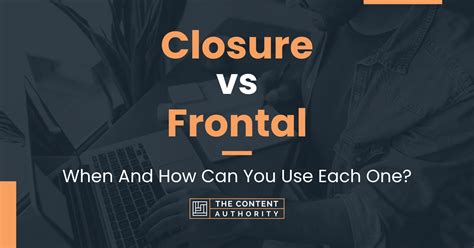Closure vs Frontal
Closure and frontal hair systems are two popular options for individuals looking to enhance their hair appearance. Both methods offer unique advantages and drawbacks, making it essential to understand the differences before making a decision.

Closure vs Frontal: 5 Key Differences
1. Coverage Area
- Closure: Covers a smaller area, typically the top or crown of the head. Ideal for individuals seeking to conceal bald spots or thinning hair.
- Frontal: Covers a larger area, extending from the hairline to the crown. Suitable for those desiring a more comprehensive coverage, including the sides and back.
2. Installation
- Closure: Glued or sewn in, creating a natural look with minimal detection.
- Frontal: Requires meticulous blending with the natural hairline, typically using glue and tape.
3. Customization
- Closure: Limited customization options, as it covers a smaller area.
- Frontal: Allows for greater customization, including parting, styling, and color matching.
4. Cost
- Closure: Generally less expensive than frontals.
- Frontal: Higher cost due to larger material usage and complex installation.
5. Maintenance
- Closure: Requires less maintenance, as it covers a smaller area.
- Frontal: More demanding maintenance, including regular styling, edge control, and removal and reinstallation.
Closure vs Frontal: Which One is Right for Me?
1. Consider Your Hair Loss Pattern
- Closure: Best for localized thinning or bald spots.
- Frontal: Suitable for more extensive hair loss or for creating a fuller appearance.
2. Evaluate Your Budget
- Closure: More economical option.
- Frontal: Requires a higher investment.
3. Assess Your Lifestyle
- Closure: Less maintenance, ideal for active individuals.
- Frontal: Higher maintenance, may not be suitable for those with limited time or resources.
4 Ways to Use Closure and Frontal Creatively
- Temple to Crown Enhancement: Use a frontal to extend hair coverage from the temples to the crown, creating a fuller, more natural look.
- Partial Fringe: Install a closure on the forehead, leaving the rest of the natural hair exposed. This creates a stylish fringe without the commitment of a full frontal.
- Side Swept Bangs: Position a frontal on the side, blending it with the natural hair to create sweeping bangs.
- Bob with Nape Coverage: Combine a closure with a frontal to cover the top and nape of the head, creating a sleek and modern bob style.
Tips and Tricks
- Choose a reputable hair stylist: Consult with an experienced professional to ensure proper installation and maintenance.
- Match the hair texture: Select hair that closely resembles your natural texture to achieve a seamless blend.
- Maintain the hair regularly: Follow the recommended washing, conditioning, and styling guidelines to prolong the lifespan of the hair system.
- Avoid excessive heat: Limit the use of heat styling tools, as they can damage the hair and shorten its lifespan.
Common Mistakes to Avoid
- Improper installation: Incorrect placement or adhesive use can lead to discomfort, damage, or an unnatural appearance.
- Neglecting maintenance: Failure to properly care for the hair system can result in tangles, breakage, and a diminished lifespan.
- Using inexpensive products: Opt for high-quality hair products and adhesives to ensure durability and avoid damage.
- Styling with excessive tension: Avoid pulling or tugging on the hair system, as this can cause loosening or premature shedding.
Frequently Asked Questions
1. Which hair system is more durable?
Both closures and frontals can last up to a year with proper care and maintenance.
2. Can I color the hair system?
Yes, but consult with a hair stylist to ensure the color is compatible with the hair type.
3. How often should I wash the hair system?
Wash every 2-3 days or as needed, using a gentle shampoo and conditioner.
4. Can I sleep with the hair system installed?
Yes, but secure it with a silk or satin scarf to prevent tangles and avoid early loosening.
5. How do I remove the hair system?
Use a specific hair system adhesive remover to gently loosen and remove the system.
6. Can I wear the hair system during exercise?
Yes, but secure it with a sweatband or headband to minimize movement and sweating.
Conclusion
Closure vs frontal: the ultimate decision depends on individual needs, preferences, and lifestyle. By carefully considering the key differences, benefits, and drawbacks of each option, you can make an informed choice that enhances your hair appearance and boosts your confidence.
